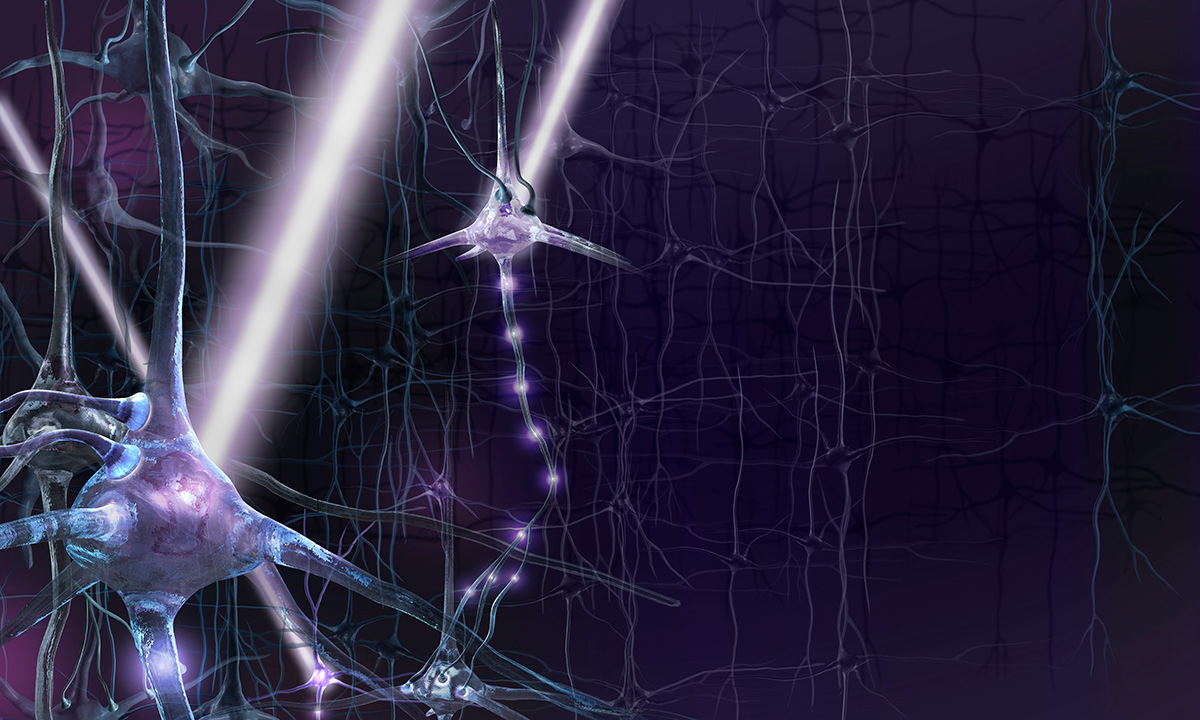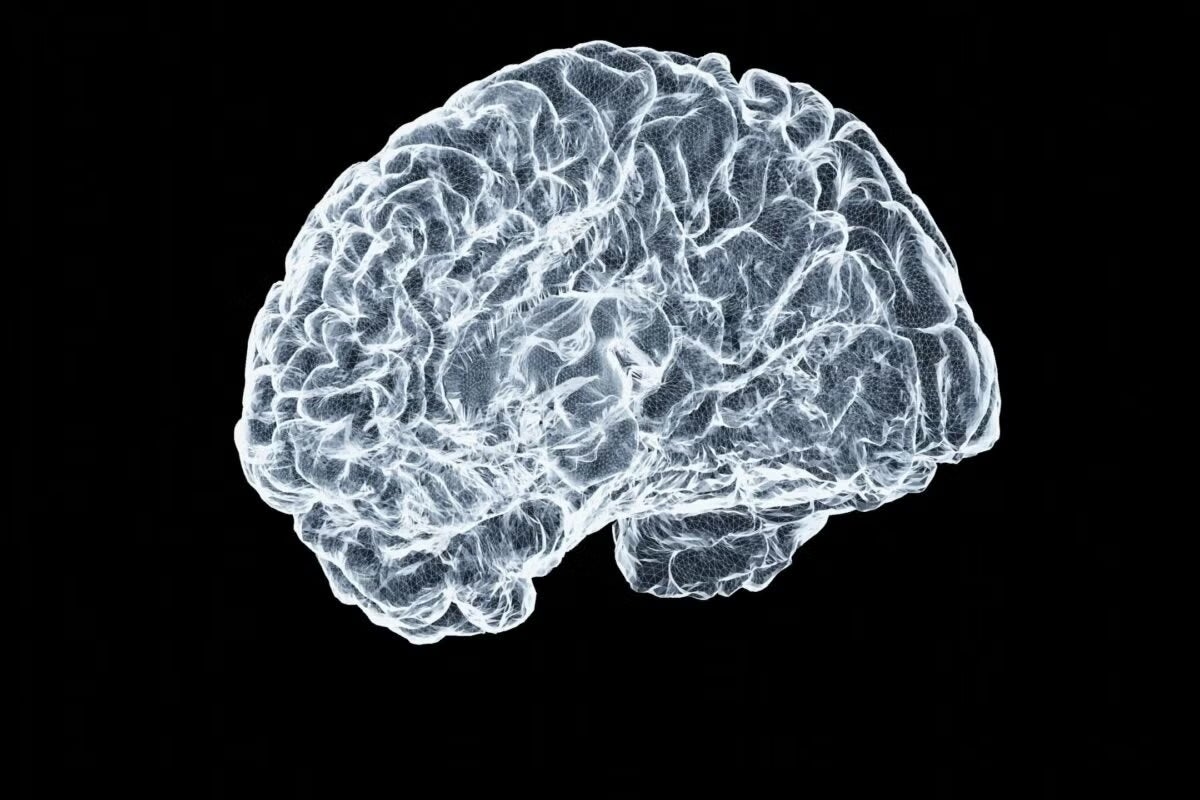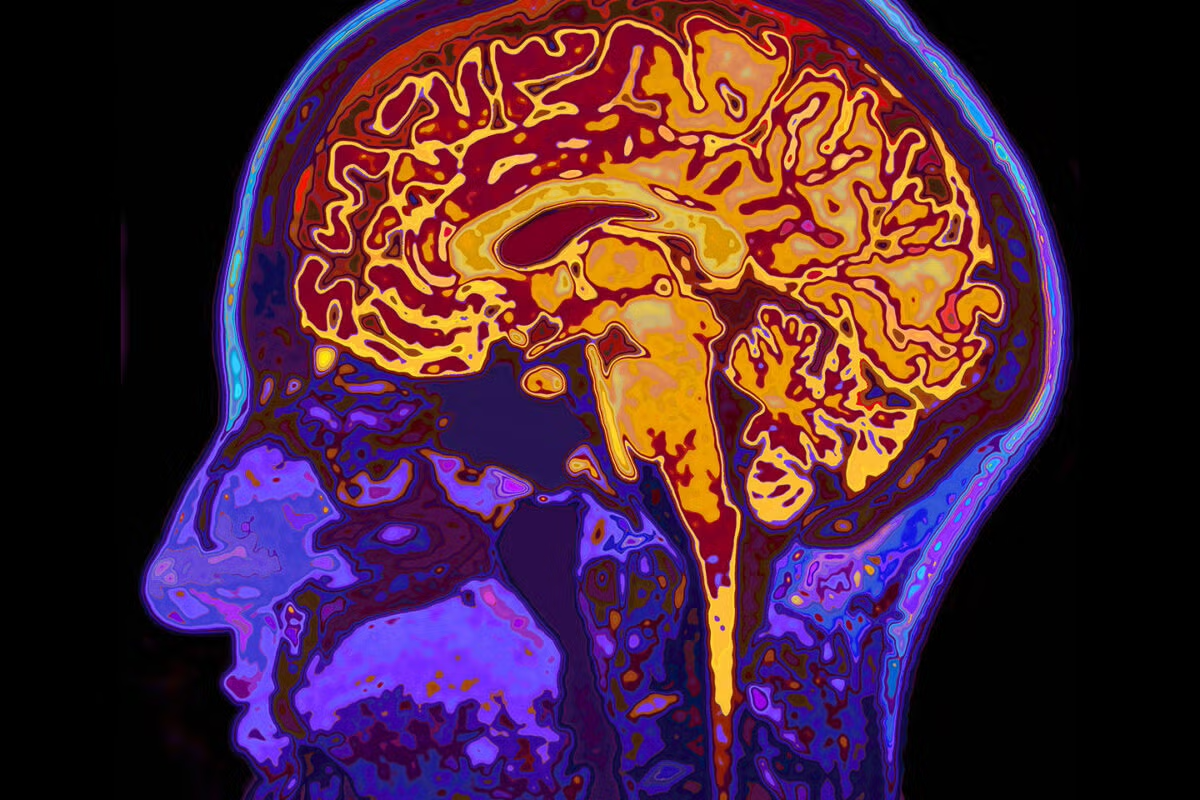Advance is a Key Step Toward Treatment of Neurological Disorders

An artist's rendering of neurons activated by light.
A technique neuroscientists use to view neurons in the brain and to turn them on and off with light, called optogenetics, is a promising strategy that could eventually treat a wide range of disorders, from chronic pain to conditions such as epilepsy and Parkinson's disease. However, scientists faced a major hurdle: It has not been possible to access specific groups of brain cells in animals that have not been genetically manipulated for testing purposes, limiting mammalian research primarily to mice. Until now.
Boris Zemelman, an associate professor of neuroscience at The University of Texas at Austin who was one of the pioneers of optogenetics in 2002, and his team have developed a new technique that delivers optogenetic proteins to specific sets of cells in living primate brains using harmless viruses. These proteins allow scientists to study and treat brains in animals much more similar to us.
This breakthrough is an important step toward the eventual goal of adapting optogenetics and other advanced neurobiology methods for clinical purposes in humans.
"A lot of what we know about brain function comes from mice, but their brains are organized very differently from our own," Zemelman said. "We now have a chance to understand more fully how our brains work."
The new technique, described March 5 in a paper on the cover of Cell Reports, uses an injection of engineered viruses to express foreign proteins in subsets of brain cells in non-transgenic rodents and primates and allows scientists to map and manipulate cells in a wide range of mammals. Beyond primates, Zemelman and his colleagues showed that the new technique can be used to introduce optogenetic proteins into the neurons of gerbils, whose hearing system is similar to our own.
"This essentially unlocks our access to model creatures so that brain mechanisms in whatever region of the brain can be studied using a simple injection," said Nicholas Priebe, a co-author of the paper and an associate professor of neuroscience at The University of Texas at Austin.
Better understanding of how the primate brain is wired could lead to a better understanding of how to manage pain, hunger and even basic functions such as breathing. Classes of neurons could be also primed so they are affected by things other than light, like medicines, potentially making treatments for neurological conditions, from depression to addiction, more effective and less prone to side effects.
"The technique provides access to the cells. The access can be used to make cells light-sensitive or drug-sensitive," Zemelman said.
Funding for the research was provided by the National Institutes of Health BRAIN Initiative.
In addition to Zemelman and Priebe, the paper's other authors were Preeti Mehta, Lauren Kreeger, Dennis C. Wylie, Jagruti J. Pattadkal, Tara Lusignan, Matthew Davis, Matthew Whitmire, Yuzhi Chen, Bridget L Kajs and Eyal Seidemann, all of UT Austin, and Gergely Turi, Wen-Ke Li and Attila Losonczy of Columbia University.



